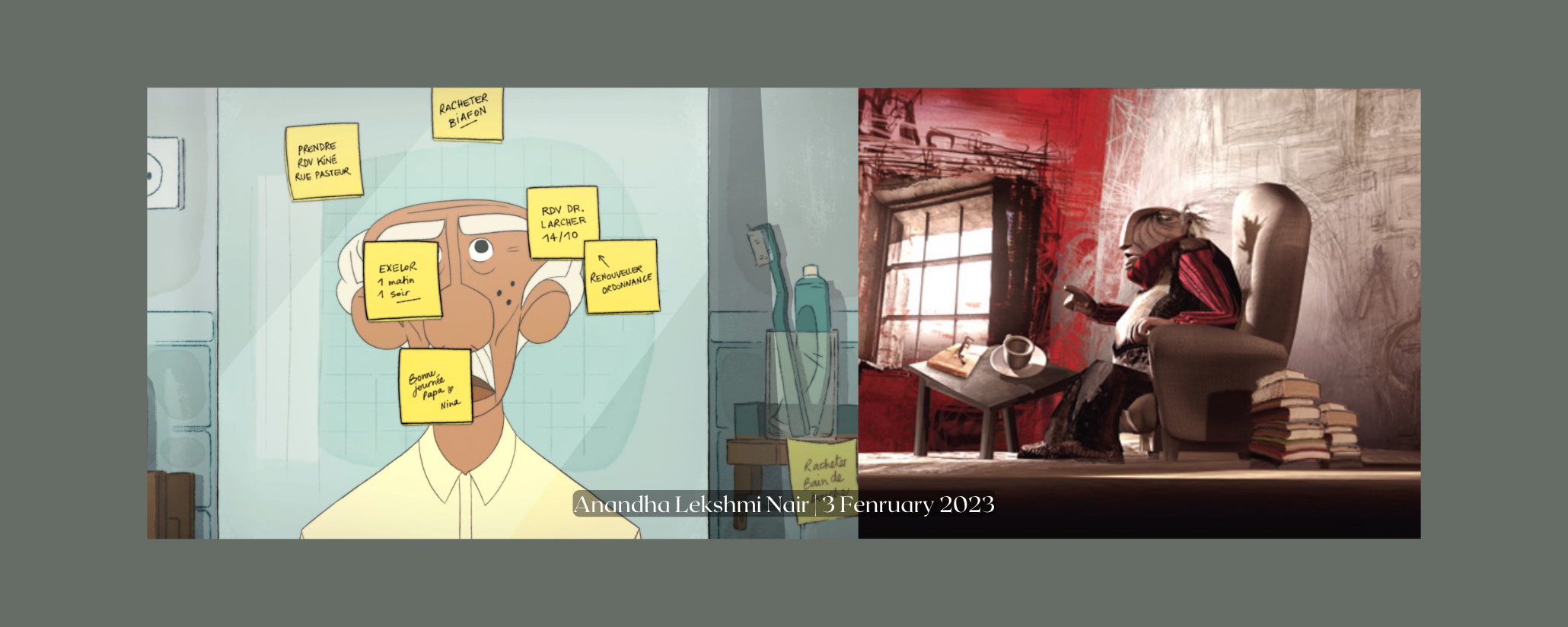A 2022 analysis of the Global Burden of Disease stated that the number of people who have dementia would increase from 57.4 million cases globally in 2019 to 152.8 million cases in 2050. With such rising numbers at sight, it is pivotal to explore this disorder and the disabilities which accompany it, and the patient’s associated experience.
Rooted in Latin de mentis, meaning ‘out of mind’, dementia is not a single disease. It is an amalgamation of multiple impairments related to memory, communication, and mobility. Though it predominantly affects the elder folk, it also affects the youth and impacts one’s family, community, and society.
Unlike the popular notion, dementia affects the patient more than merely losing their immediate memory of things, events and people. At the onset, the patient may have difficulty navigating familiar environments like the supermarket or the park. Their attention span is also highly affected, with the patient zoning out of a conversation and merely staring into space mid-sentence.
Patients who have dementia are unable to remember events or happenings for more than a few moments at a time, resulting in them repeating their conversations, forgetting people’s faces, linguistic capabilities, etc. Unlike the popular notion, dementia affects the patient more than merely losing their immediate memory of things, events and people. At the onset, the patient may have difficulty navigating familiar environments like the supermarket or the park. Their attention span is also highly affected, with the patient zoning out of a conversation and merely staring into space mid-sentence. Their sentences lose their co-relation as their speech devolves into a muddled essay of varied topics. They might leave tasks mid-way. They might also lose their sense of reasoning and understanding, sometimes holding on to bizarre beliefs. For example, there was a case where the patient believed that she might lose her head in the absence of suitable care. She could be found looking for her head under the dresser at times.
More than merely being a cognitive problem, dementia also leads to emotional and behavioural issues. Because of the disorientation and confusion, they go through, they are unable to understand their emotions. Their vulnerability also makes social interaction difficult. When dementia slowly progresses, the patient becomes weak and dependent on their caretakers to carry out menial tasks. They seclude themselves in a way that they rarely start a conversation and give rehearsed-like repeated answers to questions. Their linguistic capabilities fall apart, with many patients struggling to form coherent sentences. The pain and the confusion that the patient experiences are immense but losing their linguistic and communication capabilities make it difficult for them to communicate their suffering. This is where animation could pave the way.
While the world waits for a cure for dementia, leading to an increased number of patients, it is necessary to explore the disorder from as many perspectives as possible. Animation as a medium is apt to depict a dementia patient’s inner turmoil and outer behaviour and bring to sight their difficulty, which society cannot decipher
While the world waits for a cure for dementia, leading to an increased number of patients, it is necessary to explore the disorder from as many perspectives as possible. Animation as a medium is apt to depict a dementia patient’s inner turmoil and outer behaviour and bring to sight their difficulty, which society cannot decipher. Ironically, more realistically than live-action, animation, with its characteristics of employing metamorphosis and metaphor, can create a ‘truthful’ description of a dementia patient’s confusion for the viewer to experience and empathise with. It can give viewers insight into and ‘penetrate’ subjective, conscious experiences unfamiliar to the majority. There is a dearth of research studies which specifically target dementia and its representation through the medium of animation. The article glimpses into the themes of metaphor and metamorphosis, the unreliability of dementia-affected storytellers and the notion of ‘truth’ from their perspective.
One needs to acknowledge the dearth of animation films dealing with dementia altogether. Regardless, the article deals with four animated films: Late Afternoon by Louise Bagnall, Memo by Gobelins Animation School, Kahanikar (The Storyteller) by Nandita Jain and Niebla by Emilio Ramos.
One needs to acknowledge the dearth of animation films dealing with dementia altogether. Regardless, the article deals with four animated films: Late Afternoon by Louise Bagnall, Memo by Gobelins Animation School, Kahanikar (The Storyteller) by Nandita Jain and Niebla by Emilio Ramos.
As the name suggests, Late Afternoon narrates the happenings of an afternoon in a sitting room with two characters named Emily and Kate. Emily is an elderly woman who is tended to by her caretaker Kate. As the afternoon progresses, the viewer gets front-row seats to the patient’s subconscious state, which is almost impossible to depict in a live-action film. It begins with a white open world where Emily grapples with different blobs of colour, signifying varied memories from her past. For example, upon entering a red blob of colour, Emily revisits the time she spent as a child at a beach and a rock pool. Throughout the film, she swims through several colourful blobs, navigating through her memories and suddenly realising that her caretaker Kate is her daughter.
Memo by Gobelins Animation School explores the initial onset of dementia as the patient loses their way in the supermarket. As mentioned before, it becomes increasingly difficult for a dementia patient to navigate through familiar surroundings. The protagonist, Louis, is suffering from memory loss but “resists the overprotection of his daughter to keep his independence”, as stated in the video’s description. Despite his daughter’s advice, Louis visits a nearby store to buy coffee. As he reaches the aisle, the colours of the products bleed out of them, blurring the boundaries. He tries to escape the flood of a seemingly white colour overtaking his surroundings until he is left alone — a tiny figure in a large white frame — accepting his inability to orientate even in a familiar environment. Memory loss and spatial comprehension are represented as a creeping, engulfing white flood. However, the white fog soon fades away as his daughter, Nina, finds him sitting by the side of the road, and the surrounding regains their colours.
In Kahanikar (The Storyteller), Nandita Jain tells the story of an old man coping with dementia through the eyes of his granddaughter, Nirmala. When she asks her grandfather to tell her the story about how the coconut got its face, he tells the story of a young fisherman who, with the help of a spell, is able to remove his head and jump into the sea, enabling him to catch several fish. A jealous villager discovers the secret and buries the young fisherman’s head in the sand. Soon, it grew into a coconut tree, and all the coconuts had little faces on them. The viewer realises the dementia experienced by the grandfather as the story is muddled with inconsistencies which the granddaughter Nirmala corrects. The grandfather story includes a demon which could be understood as a metaphor for dementia. Furthermore, just like in the earlier films, the companionship of the caretakers brings a tinge of ‘colour’ or normalcy back into the lives of dementia patients.
Niebla by Emilio Ramos also explores storytelling but in quite an interesting fashion. It is a fictional animated short film imitating the interview style of a documentary film crew. The protagonist, El Pep, is an older man who narrates about the mysterious fog in the village he resides in and the resulting visitation of a strange flock of flying sheep. From the same style of documenting the story being a documentary to the apparently fictional elements in the movie, it contests the idea of truth and who possesses it. The inclusion of fictional elements in El Pep’s story is not met with concern or fear but takes a different route, with the protagonist implying multiple times: “Truth belongs to me”. With this approach, the film asks us to look at the divergence in the stories of dementia patients as ‘their truth’ instead of focusing on an objective, universal truth, the very existence of which is questioned.
Understanding Animation by Paul Wells is a foundational text aiming to “promote and provide the frameworks for a proper engagement with the animated film and the possibilities afforded by animation itself”. In Dementia, Narrative and Performance: Staging Reality, Reimagining Identities, Janet Gibson attempts to “situate and explore the contributions that theatre and performance can and do make in responding to and representing people with dementia”. Since he focuses on narrative and stories, his text was instrumental in understanding the trope of the dementia patient as the unreliable narrator in the arts.
These films deal with the inner turmoil of the patients and, with the characteristic malleability of animation, can accurately bring to sight the confusion dementia patients face. Understanding Animation by Paul Wells is a foundational text aiming to “promote and provide the frameworks for a proper engagement with the animated film and the possibilities afforded by animation itself”. The theme of metamorphoses which forms the initial argument in the text, was informed and expounded by a close reading of Wells’ text. Animated Documentary by Annabelle Honess Roe was instrumental in understanding animation and its diverse applicability to represent reality, being more truthful than live-action. This is stated in her book where she questions “what and how is the animation representing; how and why is animation being used instead of the conventional alternative? This further implies an interrogation of the ontological differences between animation and live action, in terms of their relationship with reality”. Though she does not discuss dementia and the disabilities accompanying it, she explores autism and synaesthesia and how animation strives and achieves a realistic depiction. In Dementia, Narrative and Performance: Staging Reality, Reimagining Identities, Janet Gibson attempts to “situate and explore the contributions that theatre and performance can and do make in responding to and representing people with dementia”. Since he focuses on narrative and stories, his text was instrumental in understanding the trope of the dementia patient as the unreliable narrator in the arts. Thus, with the ever-increasing number of dementia patients, animation contributes to understanding this haunting disorder devoid of a cure, giving the viewer an insight into their world of turmoil and confusion.
Anandha Lekshmi Nair is a Research Intern at CSPS.




